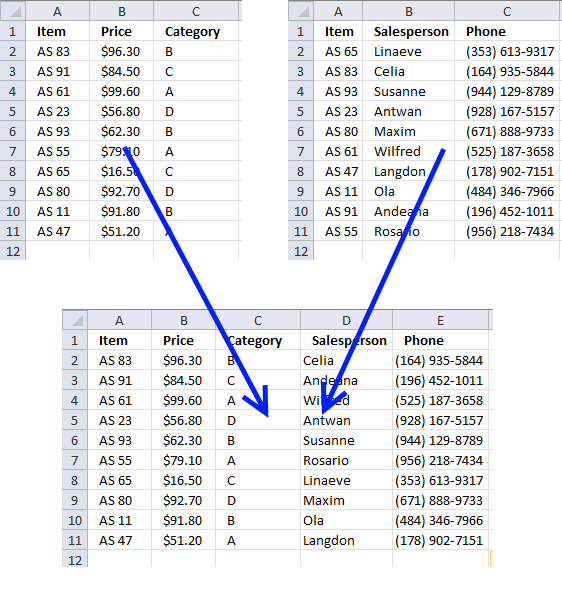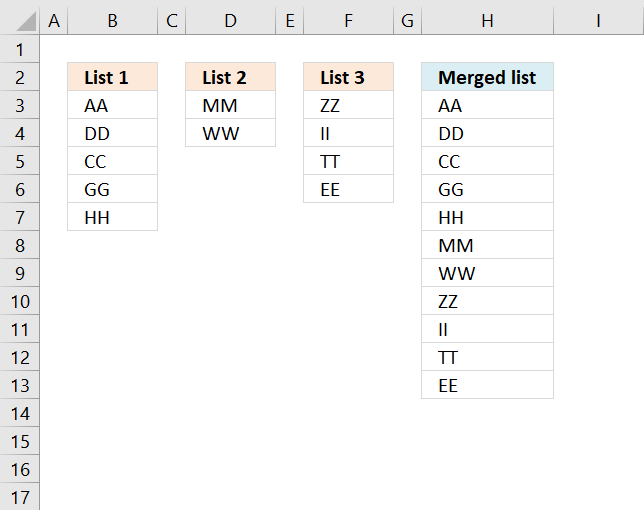'Combine Merge' category
Merge tables based on a condition
This article demonstrates techniques on how to merge or combine two data sets using a condition. The top left data […]
This article demonstrates techniques on how to merge or combine two data sets using a condition. The top left data […]
Merge cell ranges into one list
The above image demonstrates a formula that adds values in three different columns into one column. Table of Contents Merge […]
The above image demonstrates a formula that adds values in three different columns into one column. Table of Contents Merge […]
Excel formula categories
AverageChooseCombine MergeCompareConcatenateConditional FormattingCountCount valuesDatesDuplicatesExtractFilterFilter recordsFiltered valuesFilterxmlHyperlinkIf cellIndex MatchLogicLookupsMatchMaxMinNumbers in sumOR logicOverlappingPartial matchRecordsSequenceSmallSort bySort valuesSumSumifsSumproductString manipulationTimeUnique distinct recordsUnique distinct valuesUnique recordsUnique valuesVlookupVlookup return values

